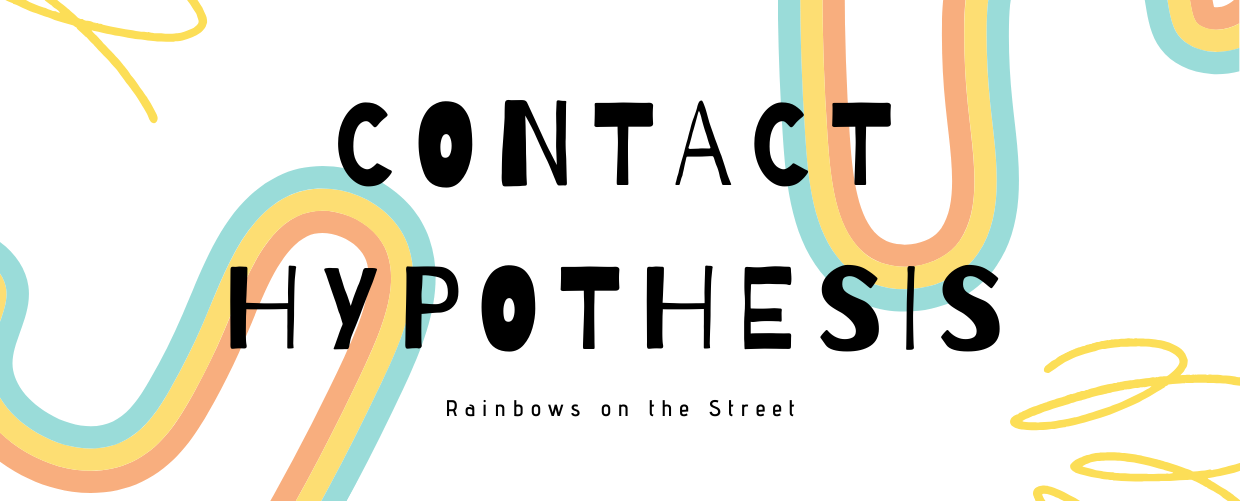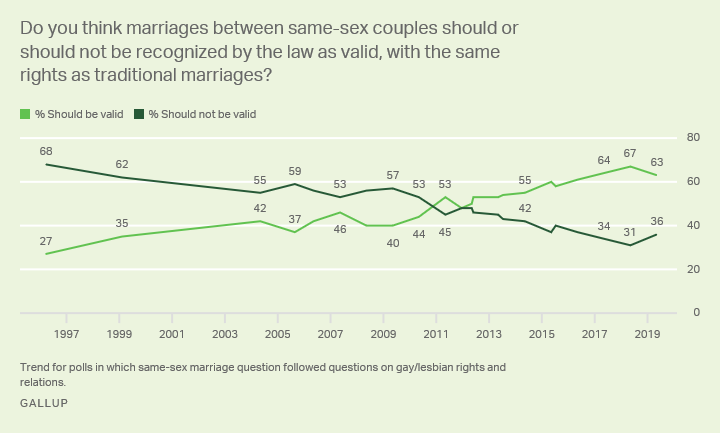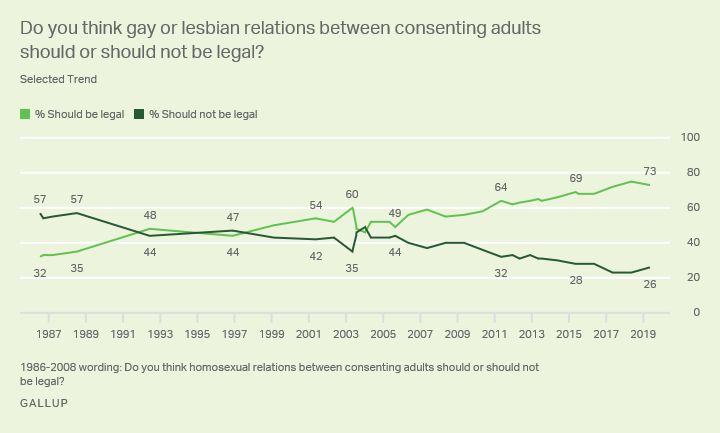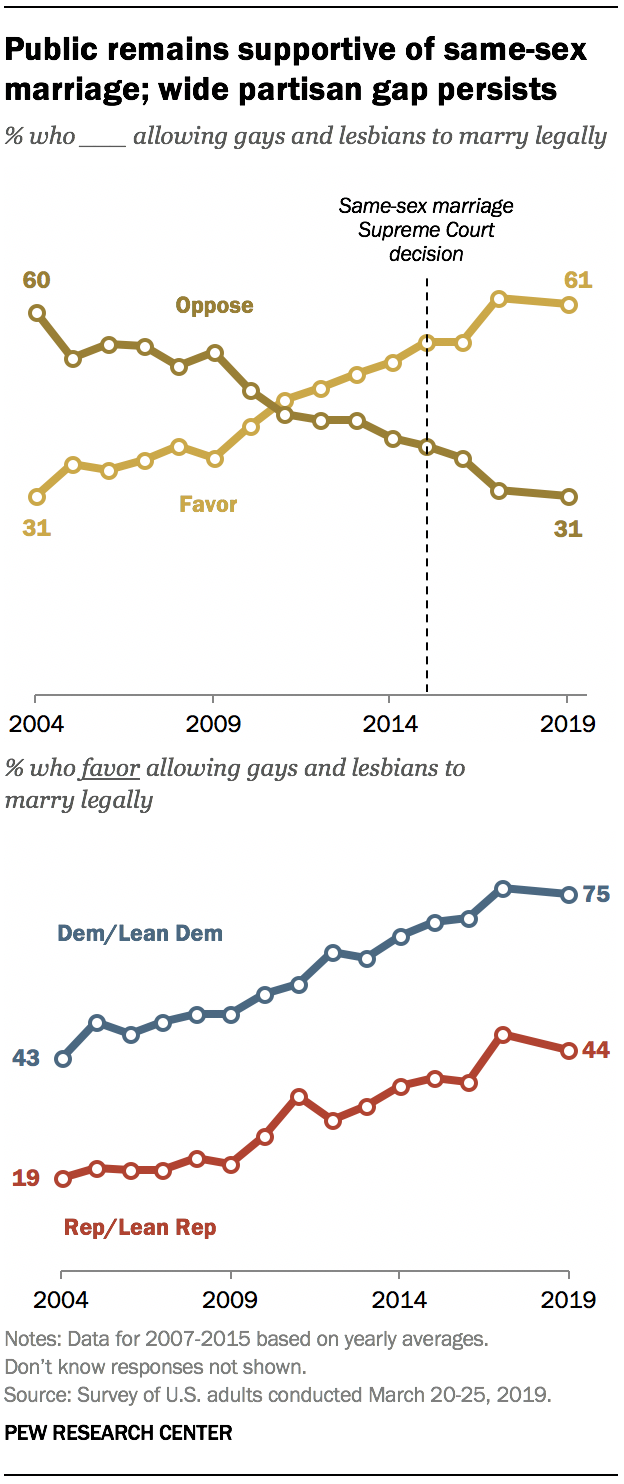
With time, American society changed its stance on the gay community, and the social barrier that was once prevalent began crumbling. During the beginning of the 1900s, many individuals looked down on homosexuality. However, now it is more widely accepted. A theory called "the contact hypothesis" explains the rapid change in people's attitudes. The contact hypothesis states that two different groups of people can improve relations and reduce prejudice with increased interaction. Communication between majority and minority groups can contribute to the development of respect for each other. As more radical gay organizations started to surface, it allowed for more direct forms of action and exposure, which created more contact between the gay community and society. As connections developed after the Stonewall Uprising, it formulated a growth of support for gay liberation, assisting the breaking of the social barrier.
“‘You can’t find another issue where attitudes have shifted so rapidly,’ said Don Haider-Markel, a political science professor at the University of Kansas who has studied public opinion of LGBT rights over the years.” (Schmidt, 2019)


